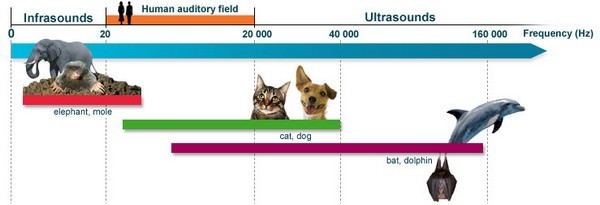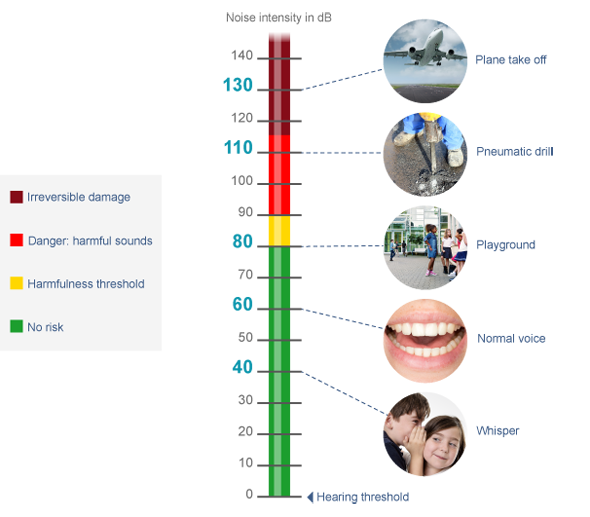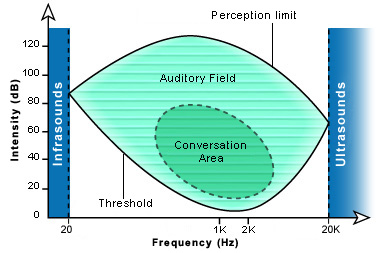Tous droits réservés © NeurOreille (loi sur la propriété intellectuelle 85-660 du 3 juillet 1985). Ce produit ne peut être copié ou utilisé dans un but lucratif.
The human auditory field corresponds to a specific band of frequencies and a specific range of intensities, perceived by our ear. Acoustic vibrations outside of this field are not considered as "sounds", even if they can be perceived by other animals.
Frequencies perceived by man and some common mammals
graph S. Blatrix
Human ear perceives frequencies between 20 Hz (lowest pitch) to 20 kHz (highest pitch). All sounds below 20 Hz are qualified as infrasounds, althought some animals (ex. mole-rat, or elephant) are hearing them. Similarly, all sounds above 20 kHz are qualified as ultrasounds, but their are sounds for a cat or a dog (up to 40 kHz) or for a dolphin or a bat (up to 160 kHz).
Intensities perceived by man
graph S. Blatrix
The human ear as a dyamic range from 0dB (threshold) to 120-130 dB.
This is true for the middle frequency range (1-2 kHz). For lower or higher frequencies, the dynamic is narrowed.
However, as shown on this graph, all sounds above 90 dB are damaging the inner ear and even doing irreversible damage above 120 dB. (see " Noise: watch out ! Danger !")
Human auditory field: frequency-intensity curves
| graph P. Minary |
The human auditory field (green) is limited by the threshold curve (bottom) and a curve giving the upper limit of sound perception (top). At each frequency, between 20 Hz and 20 kHz, the threshold of our sensitivity is different. The best threshold (at around 2 kHz) is close to 0 dB. It is also in this middle range of frequencies that the sensation dynamics is the best (120 dB). The conversation area (dark green) demonstrates the range of sounds most commonly used in human voice perception; when hearing loss affects this area, communication is altered.
 Français
Français
 English
English
 Español
Español
 Português
Português





Facebook Twitter Google+